To remove a plastic engine cover, first, locate and unscrew the fasteners securing it, then lift and carefully pull it off. Removing a plastic engine cover involves locating and unscrewing the fasteners holding it in place.
Once the fasteners are removed, carefully lift and pull the cover off the engine. This process may vary slightly depending on the make and model of your vehicle, so it’s important to consult your vehicle’s manual for specific instructions. When performing maintenance or repairs on your vehicle, it may be necessary to remove the plastic engine cover.
This cover is designed to protect the engine and provide a streamlined appearance under the hood. While the process may seem simple, it’s important to approach it with caution to avoid damaging the cover or the engine.
With the right tools and careful handling, you can safely remove the plastic engine cover and access the components underneath for maintenance or repairs.
How To Remove Plastic Engine Cover
To remove a plastic engine cover, start by locating the fasteners and screws that hold it in place. Use a screwdriver or wrench to loosen and remove these fasteners. Once all the fasteners are removed, gently lift the cover off the engine and set it aside.
Taking care not to damage any connected hoses or wires is essential throughout this process.
Step-by-step Guide On How To Remove A Plastic Engine Cover:
When you need to access your engine for maintenance or repairs, removing the plastic engine cover is the first step. Follow these easy steps to safely and effectively remove the engine cover without causing any damage.
Tools And Materials Needed:
- Flat-head screwdriver: Using a flat-head screwdriver will help you efficiently pry open the clips securing the engine cover in place.
- Safety gloves: Ensure you have safety gloves to protect your hands during the removal process.
- Flashlight: The added visibility provided by a flashlight can make removing the engine cover much easier.
Removing The Engine Cover:
Locate the Clips: Use the flashlight to locate the clips securing the plastic engine cover in place. These clips are usually positioned at various points around the cover and can easily be spotted with proper lighting.
- Loosen the Clips: Once you’ve located the clips, carefully insert the flat-head screwdriver into the slot of each clip and gently pry it open. Take your time with this step to avoid breaking the clips or damaging the engine cover.
- Lift Off the Cover: Once all the clips are loosened, gently lift the engine cover off the engine. Be mindful of any wires or hoses that may be attached to the cover and disconnect them as needed.
- Store the Cover Safely: To prevent any damage to the engine cover, store it in a safe area away from the work area. This will ensure that it remains in good condition while you work on the engine.
The process of removing a plastic engine cover is relatively straightforward, requiring minimal tools and effort. By following these simple steps, you can safely and effectively remove the engine cover without causing any damage, granting you access to the engine for maintenance or repairs.
How To Remove Engine Cover Clips
To remove plastic engine cover clips, start by locating the clips and carefully prying them off using a flathead screwdriver. Gently lift off the cover once the clips are removed, being mindful of any attached hoses or wires. This process allows for access to the engine for maintenance or repairs.
When it comes to removing the plastic engine cover from your vehicle, one of the essential steps is handling the engine cover clips properly.
Whether you are doing routine maintenance or need to access the engine components, understanding how to remove these clips is crucial.
Below are the key steps to take when removing the engine cover clips.
- Locate the Clips: Begin by identifying the clips securing the engine cover. They are typically positioned along the edges of the cover and may vary in number depending on the vehicle model.
- Use the Right Tool: An appropriate tool, such as a flathead screwdriver or a trim removal tool, can aid in prying the clips open. It’s essential to have the right tool to avoid damaging the clips or the cover.
- Release the Clips: Gently insert the tool under the edge of each clip and apply even pressure to release them. Work your way around the cover, gradually releasing each clip. Be cautious not to force or break the clips.
- Lift the Cover: Once all clips are released, carefully lift the engine cover off the engine bay. Ensure that no wires or hoses are attached before completely removing the cover.
By following these steps, you can efficiently remove the engine cover clips and gain access to the engine components as needed.
Does Removing Engine Cover Improve Performance
Removing the plastic engine cover may enhance performance by improving airflow and cooling. This simple modification can make working on your engine easier and give it a more aggressive appearance.
Always consult your car’s manual before making any changes to ensure safety and proper operation.
Does Removing Engine Cover Improve Performance?
Removing the engine cover of your vehicle can be a common modification among car enthusiasts and aspiring mechanics. It is often debated whether removing the engine cover can actually improve the performance of your vehicle.
Let’s explore the potential benefits and drawbacks of removing the engine cover from your car.
Benefits Of Removing The Engine Cover:
- Enhanced Airflow: Removing the engine cover can improve the airflow to the engine, potentially allowing for better cooling and performance.
- Visual Inspection: Without the cover, you can easily visually inspect the engine for any leaks, damage, or wear and tear.
- Access to Components: It provides easier access to various engine components for maintenance and modifications.
- Customization: The absence of the engine cover allows for customization and personalization options, enhancing the aesthetic appeal of your engine bay.
Drawbacks Of Removing The Engine Cover:
- Protection: The cover serves as a layer of protection from debris, dust, and moisture, which can be compromised when removed.
- Increased Noise: Without the cover, engine noise may become more noticeable inside the cabin.
- Aesthetics: While some may appreciate the exposed engine, others may prefer the cleaner look of a covered engine bay.
Ultimately, the decision to remove the engine cover should be based on personal preferences and specific vehicle modifications. It’s important to weigh the potential benefits against any drawbacks before making a decision.
Always consult the vehicle’s manual or a professional for guidance on modifications that may impact performance or safety.
Benefits Of Removing Engine Cover
Removing the plastic engine cover can improve airflow, making it easier to access and work on the engine. This may result in better engine cooling and performance, as well as easier maintenance and servicing. It can also enhance the overall appearance under the hood.
Removing the engine cover from your vehicle can have several advantages. Whether you are a car enthusiast or simply want to maintain your vehicle better, understanding the benefits of removing the engine cover can help you make an informed decision.
- Enhanced Accessibility: Removing the engine cover provides easier access to various components such as the spark plugs, ignition coils, and various sensors, facilitating maintenance and repairs.
- Improved Heat Dissipation: Without the cover, heat generated by the engine can dissipate more effectively, preventing potential heat buildup and enabling better engine cooling.
- Visual Inspection: Taking off the engine cover allows for visual inspection of the engine, enabling early detection of any leaks, worn-out components, or irregularities that may require attention.
- Prevents Contamination: Dust, debris, and fluids may accumulate under the cover, potentially causing damage to engine components. Removing the cover allows for thorough cleaning and minimizes the risk of contamination.
Removing the engine cover not only enhances accessibility for maintenance and repairs but also aids in heat dissipation, facilitates visual inspection, and prevents potential contamination, ultimately contributing to better overall engine performance.
How To Remove Vortec Engine Cover
To remove the plastic engine cover, first, locate the securing clips or bolts. Use a screwdriver or wrench to loosen and remove them. Once all the fasteners are off, gently lift and remove the cover from the engine. Be cautious not to force it off to prevent damage.
Removing A Vortec Engine Cover
If you are wondering how to remove a Vortec engine cover, you’ve come to the right place. Below, you will find a straightforward guide to help you achieve this task effortlessly.
Steps To Remove Vortec Engine Cover:
- Start by locating the retention clips on the engine cover.
- Gently press the retention clips to release them from their secured position.
- Lift the engine cover carefully, ensuring all retention clips are fully disengaged.
- Set the removed engine cover aside for safekeeping.
Removing your Vortec engine cover is a simple task that can be completed in just a few minutes. Now that you have successfully removed the cover, you can proceed with any required maintenance or modifications.
How To Remove 5.7 Hemi Engine Cover
To remove the 5. 7 Hemi engine cover, start by locating the screws or clips securing it in place. Use the appropriate tools to loosen these fasteners. Then carefully lift the cover off the engine, ensuring that no wires or hoses are attached.
This process can vary slightly depending on the specific make and model of the vehicle.
When it comes to maintaining your vehicle, knowing how to remove the 5. 7 Hemi engine cover can be useful. Whether it’s for upgrades, repairs, or just to do a thorough cleaning, removing the engine cover can give you better access to the components underneath.
Here’s a guide to help you successfully remove the 5. 7 Hemi engine cover.
Tools You’ll Need:
- Ratchet with Extension: A ratchet with an extension will make it easier to reach and loosen the bolts holding the engine cover in place.
- Socket Set: Ensure you have the appropriate socket size for the bolts securing the engine cover.
- Trim Tool or Flathead Screwdriver: This tool will help you carefully pry off any clips or fasteners holding the engine cover in place.
- Clean Cloth: Having a clean cloth handy can help you wipe down the engine cover before reinstallation.
Step-by-step Guide:
- Locate the Fasteners: Begin by locating and identifying the fasteners securing the 5.7 Hemi engine cover. These can be bolts, clips, or screws, so be sure to inspect the cover to determine the type of fasteners used.
- Use the Ratchet and Socket Set: Once you have located the fasteners, use the ratchet and socket set to carefully loosen and remove the bolts holding the engine cover in place. Take your time to avoid stripping the bolts or damaging the cover.
- Pry Off the Clips or Fasteners: If there are clips or fasteners securing the engine cover, carefully use a trim tool or flathead screwdriver to pry them off. Work your way around the cover to release each clip or fastener.
- Lift Off the Engine Cover: With all the fasteners removed, carefully lift off the 5.7 Hemi engine cover. Be mindful of any wiring or hoses that may still be connected, and gently disconnect them if necessary.
- Inspect and Clean: Once the engine cover is removed, take the opportunity to inspect the components underneath. Additionally, use a clean cloth to wipe down the engine cover and the exposed areas of the engine.
Keeping Your 5.7 Hemi Engine Cover In Top Condition
Now that you’ve successfully removed the 5. 7 Hemi engine cover, you can proceed with your planned maintenance, repair, or upgrades. Always remember to handle the engine cover with care, and pay attention to any connections that may need to be detached.
With this guide, you’ll be able to remove the engine cover smoothly and efficiently, ensuring that your vehicle stays in top condition.
How Do You Remove An Engine Front Cover?
To remove the plastic engine cover, start by locating the fastening pins or screws. Use the appropriate tools to carefully loosen and remove them. Once the fastenings are released, gently lift the engine cover off, being mindful of any hoses or wiring connected underneath.
If necessary, refer to the vehicle’s manual for specific instructions.
Removing The Engine Front Cover:
Step-by-step Guide:
- First, locate the fasteners securing the front cover to the engine. These are typically bolts or clips.
- Use the appropriate tool, such as a socket set or screwdriver, to remove the fasteners.
- Carefully lift the front cover away from the engine, ensuring that all attachments are detached, to avoid damage.
Precautions:
- Before attempting to remove the front cover, ensure the engine has cooled down to prevent accidental burns.
- Double-check your vehicle’s manual to confirm the specific fastening mechanism and any additional steps required.
Safety Measures:
- Wear protective gloves and eyewear to safeguard yourself from any sharp edges or potential debris that may be attached to the front cover.
Tips For Reinstallation:
- Keep track of the fasteners and their placements to easily reattach the front cover without confusion.
- Inspect the front cover for any damage or wear, and address any issues before reinstalling it to ensure proper engine protection.
Final Steps:
Clean the area around the engine before securing the new front cover in place to maintain a tidy engine compartment.
What Is The Plastic Piece That Covers The Engine?
The plastic cover on the engine of a vehicle can be removed easily by locating the securing clips or bolts around the edge. Carefully unclip or unscrew them, then lift the cover off gently to access the engine components underneath.
This process may vary slightly depending on the make and model of the car.
When you peer under the hood of your car, you might notice a conspicuous plastic piece covering the engine. This component is called the engine cover, and it serves several important purposes. Read on to learn more about this often overlooked but vital component of your vehicle.
Engine Cover: A Barrier And Protection
- The engine cover serves as a protective barrier for the engine components, shielding them from dust, debris, and moisture.
- Additionally, it aids in reducing engine noise, providing a quieter driving experience for occupants.
Material And Design
- Engine covers are typically made from durable plastic or other lightweight materials that can withstand the high temperatures produced by the engine.
- They are designed to fit snugly over the engine, ensuring a secure and reliable barrier against external elements.
Enhanced Aesthetics And Safety
- The engine cover also contributes to the overall aesthetics of your vehicle by providing a clean and streamlined appearance under the hood.
- Moreover, it enhances safety by preventing accidental contact with hot engine parts, reducing the risk of burns or injuries.
Understanding the purpose and importance of the plastic engine cover can help you appreciate its role in maintaining the optimal performance and aesthetics of your vehicle.
Can You Drive Without A Plastic Engine Cover?
Yes, you can drive without a plastic engine cover, but it’s not advisable as it protects the engine from dirt and debris. To remove the plastic engine cover, start by locating the mounting points and carefully unscrewing them. Lift the cover off once all screws are removed, making sure to keep track of the bolts.
When it comes to your vehicle’s engine cover, you might have wondered if it’s a crucial component for driving. Let’s explore the functionalities and implications of driving without a plastic engine cover.
Importance Of A Plastic Engine Cover:
- Protection: The cover shields the engine from debris, water, and other external elements, preventing damage and corrosion.
- Heat insulation: It helps regulate the engine temperature, ensuring optimal performance and longevity.
- Noise reduction: The cover minimizes engine noise, providing a quieter driving experience and enhancing comfort.
Implications Of Driving Without A Plastic Engine Cover:
- Increased risk of damage: Without the cover, the engine is vulnerable to debris and moisture, potentially leading to wear and tear.
- Elevated noise levels: The absence of the cover can result in louder engine noise, affecting the overall driving experience.
- Potential heat issues: In some cases, driving without the cover can lead to inadequate heat insulation, impacting engine performance.
While it may be possible to drive without a plastic engine cover, it’s not recommended due to the potential risks associated with its absence. The cover plays a significant role in protecting the engine and optimizing its functionality, making it an essential component for your vehicle.
Should I Take An Engine Protection Cover?
Consider the benefits of engine protection cover to safeguard your vehicle’s engine from potential damage. Removing the plastic engine cover can grant you easier access for maintenance tasks and inspections, ensuring the longevity and performance of your engine.
Engine protection covers serve multiple purposes, including shielding the engine from debris and providing thermal insulation. The decision to remove this cover, however, may depend on several factors.
Protection: Engine covers safeguard the engine from dirt, debris, and water, contributing to enhanced longevity and reduced wear and tear.
- Temperature Regulation: The cover assists in maintaining ideal operating temperatures, preventing overheating and ensuring optimal engine performance.
- Accessibility: Upon removal, it becomes easier to access various engine components for maintenance and repairs.
- Aesthetic Appeal: Some engine covers are designed for visual appeal, enhancing the overall look of the engine bay.
Factors To Consider Before Removing The Engine Cover
Before opting to remove the engine cover, it is crucial to consider the following factors:
- Operating Environment: Assess the typical driving conditions to determine whether the engine cover is necessary for protection against environmental elements.
- Maintenance Requirements: Consider the frequency of maintenance or repairs, as removal may expedite access to engine components for service.
- Visual Appeal: Evaluate whether the design and aesthetics of the engine cover add value to the overall aesthetics of the vehicle.
- Manufacturer Recommendations: Consult the vehicle’s manufacturer guidelines to ensure that removing the cover will not compromise the engine’s performance.
As a conscientious vehicle owner, the decision to remove the engine protection cover should be based on an understanding of its impact on engine performance, maintenance requirements, and the operating environment.
It’s essential to weigh the benefits of improved accessibility and aesthetics against the protective functions of the cover.
How Do You Remove An Engine Splash Shield?
To remove a plastic engine cover, locate the bolts or clips holding it in place and use the appropriate tool to unscrew or release them. Once the fasteners are removed, carefully lift the cover off the engine and set it aside.
Be sure to keep track of the hardware for reinstallation.
How To Remove An Engine Splash Shield
If you need to access your car’s engine or work on its components, you may need to remove the engine splash shield. Here’s how to do it.
Steps For Removal
- Locate the splash shield: It is usually located at the bottom of the engine and is made of plastic or metal to protect the engine and other components from debris and water.
- Lift the car: Use a jack to raise the car, ensuring it is secure on jack stands for safety.
- Unscrew the fasteners: Remove the screws or bolts holding the splash shield in place using a wrench or screwdriver.
- Slide out the shield: Once the fasteners are removed, gently slide out the shield from beneath the car.
Tips For Removal
- Use gloves and eye protection: There may be dirt or grease on the shield, so it’s best to protect yourself.
- Keep track of the fasteners: Organize and store the screws, bolts, and clips in a container to avoid misplacing them.
Now, you should be able to remove the engine splash shield with ease!
Frequently Asked Questions Of How To Remove Plastic Engine Cover
Can I Take The Plastic Cover Off My Engine?
Yes, you can remove the plastic cover from your engine for maintenance or customization. Be sure to follow manufacturer guidelines.
How Do You Remove An Engine Front Cover?
To remove an engine front cover, first, disconnect the battery. Then, remove the bolts and fasteners holding the cover in place. Next, carefully pry and lift the cover off the engine. Finally, inspect for any remaining components that may need to be detached before fully removing the cover.
Can You Drive Without Plastic Engine Cover?
Yes, you can drive without the plastic engine cover, but it is not recommended as it protects the engine.
What Is The Cover Over The Engine Called?
The cover over the engine is called the engine cover. It protects the engine from dust and debris.
Conclusion
To sum up, removing a plastic engine cover is a simple task that can be done with just a few tools and a little patience. By following the step-by-step guide in this blog post, you can confidently tackle this DIY project and gain access to your engine for maintenance or repairs.
Get ready to take the next step in maintaining your car!

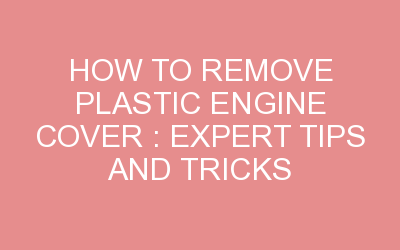
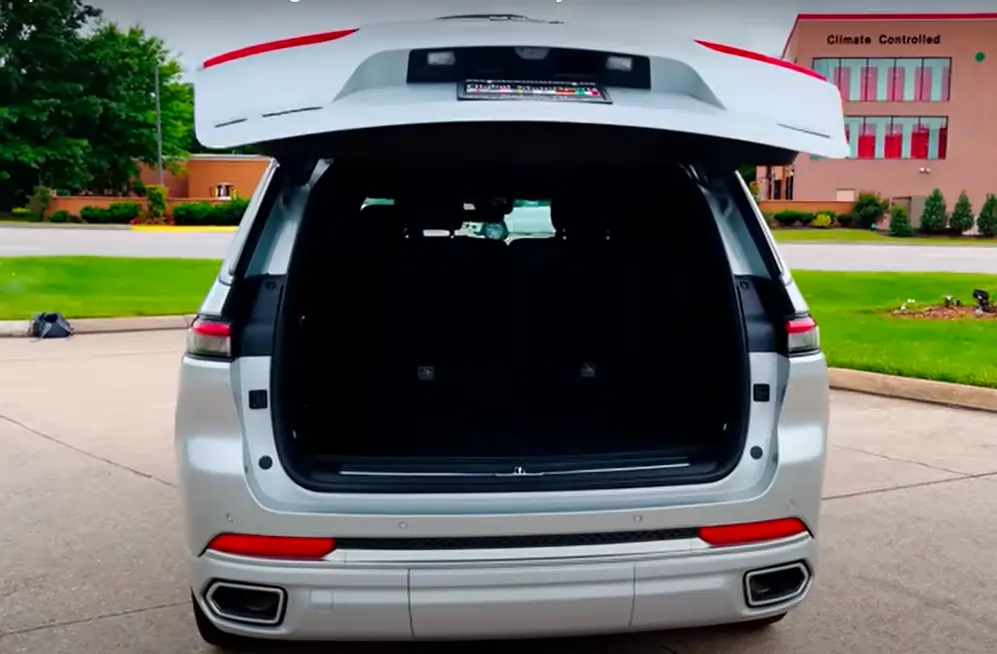


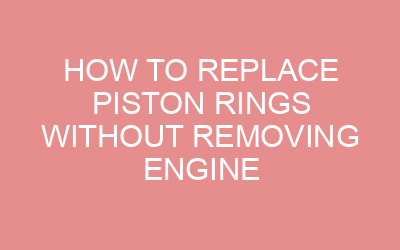


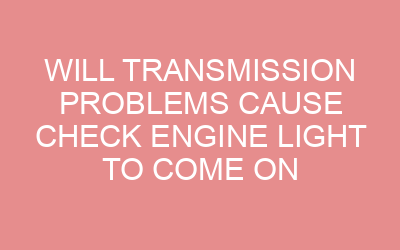
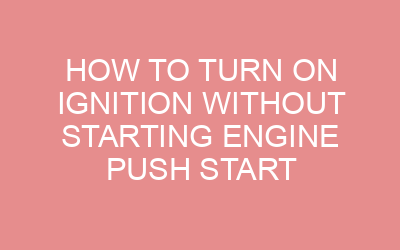




Leave a Reply